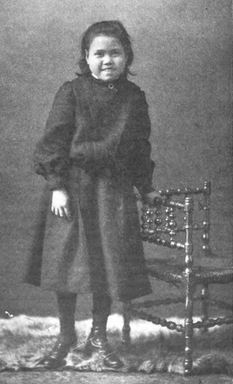Kirkina Mucko facts for kids
Quick facts for kids
Kirkina Mucko
|
|
|---|---|
| Born |
Elizabeth Jeffries
1890 near Rigolet, Labrador
|
| Died | 1970 |
| Nationality | Canadian |
| Other names | Kirkina Mukko, Elizabeth Mukko |
| Occupation | nurse, midwife |
| Years active | 1918-1970 |
| Known for | nurse, midwifery |
Kirkina Mucko, also known as Elizabeth Mukko (1890-1970), was a brave Inuit nurse and midwife from Canada. She faced many challenges, including losing her legs as a child. Despite this, she dedicated her life to helping others.
Kirkina worked at the Grenfell Mission in Labrador. After a terrible flu pandemic in 1918, she became a nurse and midwife. She cared for her community for many years. Today, a women's shelter in Rigolet is named after her.
Contents
Kirkina's Early Life and Challenges
Elizabeth Jeffries was born in 1890. Her birthplace was near Rigolet, Labrador, by the Hamilton Inlet. Her father was an Inuit-Scots trapper.
When she was a toddler, her legs became severely frozen. They had to be amputated below the knee. Later, she went to the Indian Harbour Hospital. Doctors there performed surgery to help her stumps heal properly.
This is where Wilfred Grenfell, a mission doctor, met her. Elizabeth was about four years old then. A nurse took Elizabeth to a temporary school in Halifax, Nova Scotia. By 1902, she was able to write letters in English.
Learning to Walk Again
By the age of ten, Elizabeth could move around well. She used special leather pads her father made for her. In 1900, Dr. Grenfell renamed her Kirkina. He took her to Battle Harbour Hospital, where she stayed for two years.
In 1902, Dr. John McPherson, part of the mission staff, made her temporary wooden artificial legs. Kirkina quickly learned how to use them. Around 1903, she received her first pair of cork artificial legs. These were donated by people in Boston, Massachusetts.
When Dr. McPherson and his wife left Labrador, Kirkina went with them. She first went to Boston, then to Mexico. She later returned to New York for two years of schooling. After four years in Mexico, she came back to Newfoundland in 1908. She lived with a nurse in Forteau.
In 1912, Kirkina received a new set of legs. These were also from donors in the United States.
Kirkina's Career as a Nurse
Kirkina Jeffries began working at the Grenfell Mission in St. Anthony. On March 20, 1916, she married Adam Mucko, a trapper. He was thirty years older than her.
In 1918, a terrible worldwide flu pandemic hit. Kirkina lost her husband and some of her children to this illness. After this sad time, she decided to study nursing and midwifery at the mission.
Helping Her Community
Mucko lived in Rigolet and offered nursing services. She helped anyone living within 35 miles of her home. She was dedicated to her community.
In 1950, her artificial legs had worn out. Airmen from the Royal Canadian Air Force and United States Air Force helped her. They were stationed at Goose Bay Canadian Forces Base. They donated money for a new pair of legs. Kirkina went to St. John's, Newfoundland to have them fitted.
By 1961, those legs also wore out. The airmen at the base again collected money to replace her limbs. Kirkina continued nursing until the end of her life. In her later years, she lived with her daughter in Happy Valley-Goose Bay.
Kirkina Mucko passed away in 1970. After her death, a women's shelter in Rigolet was named in her honor. This was to remember her amazing life and dedication.
Images for kids



